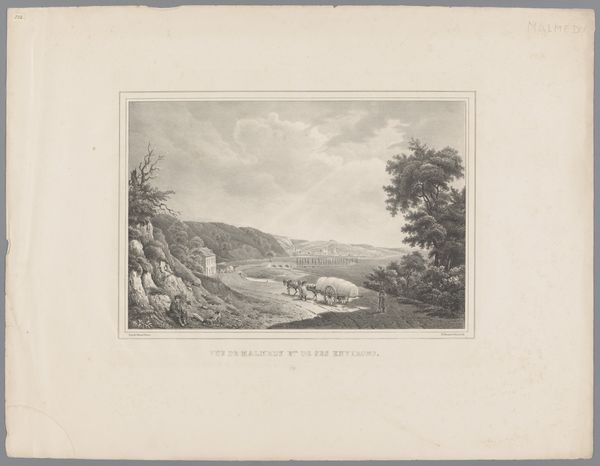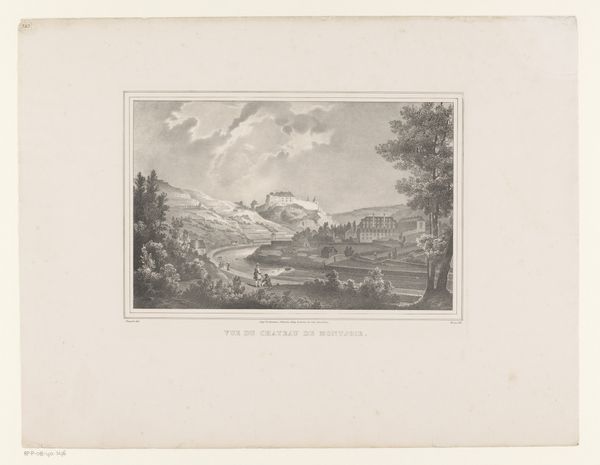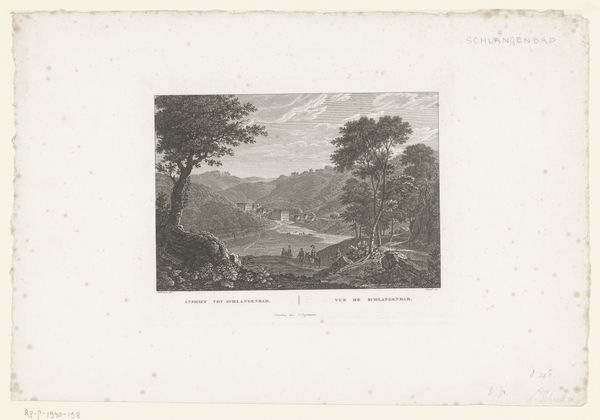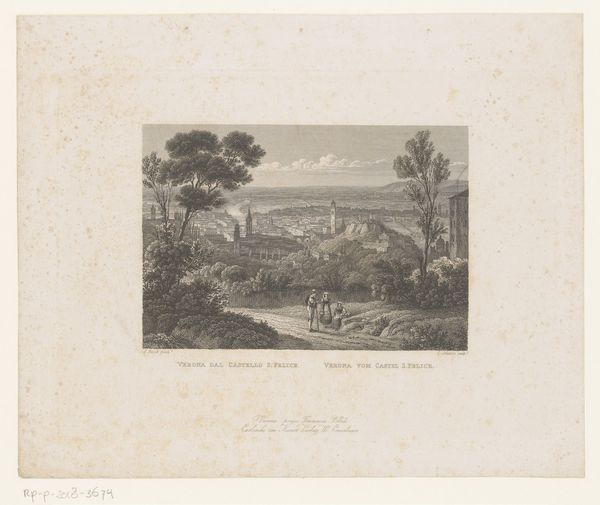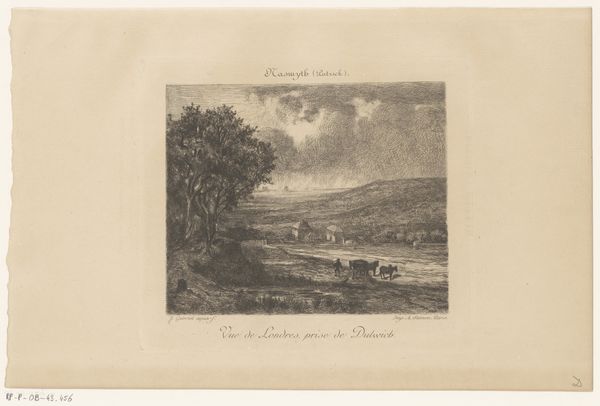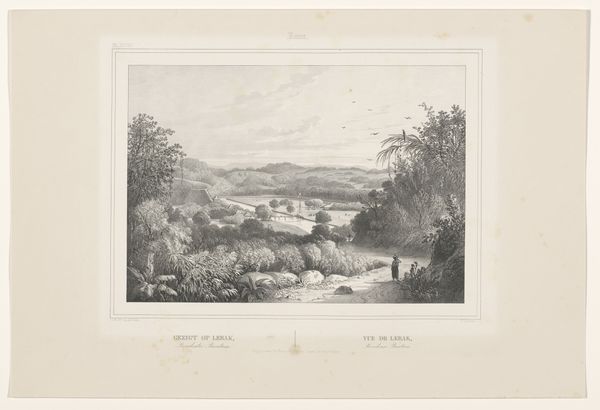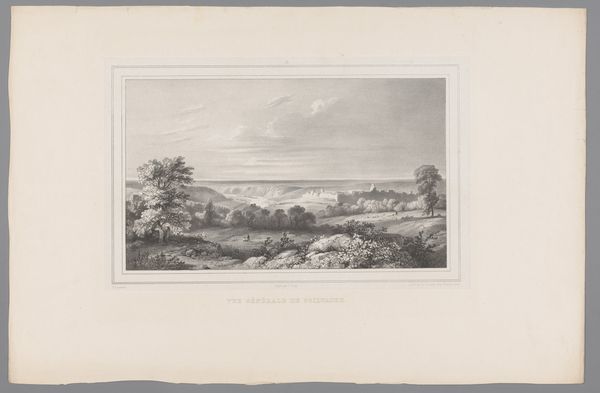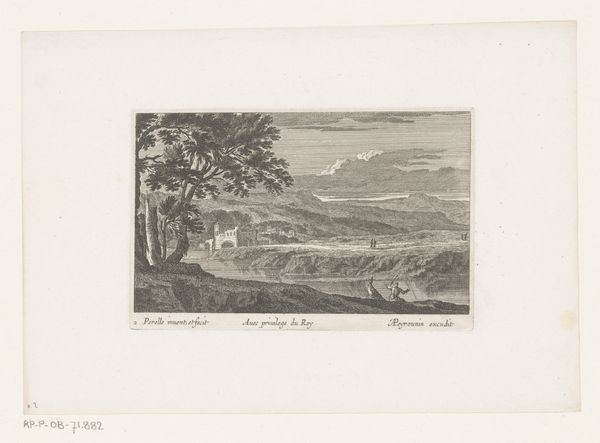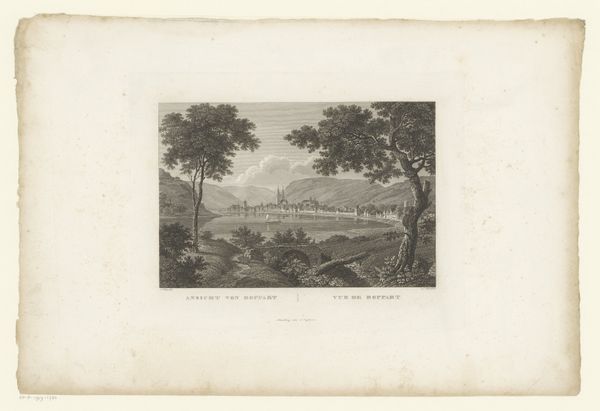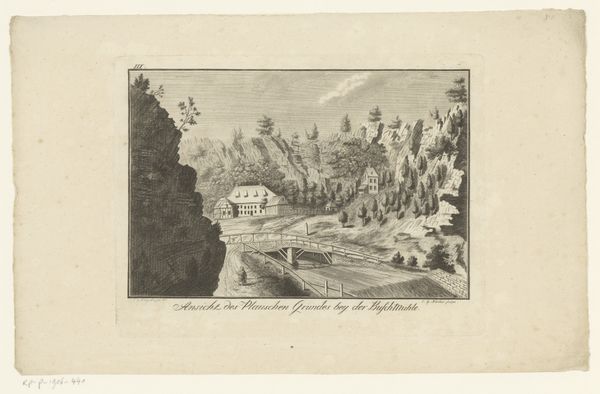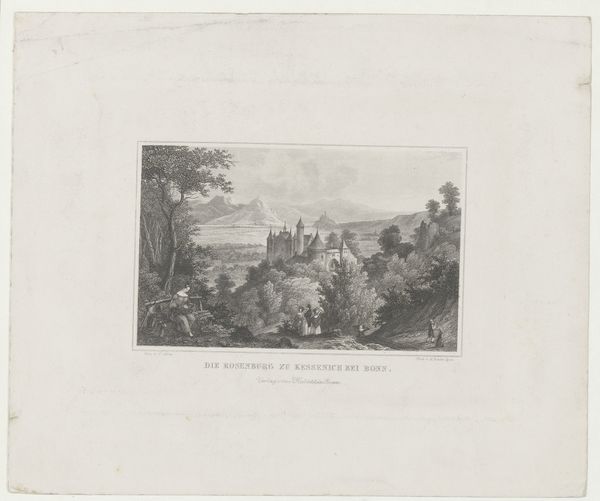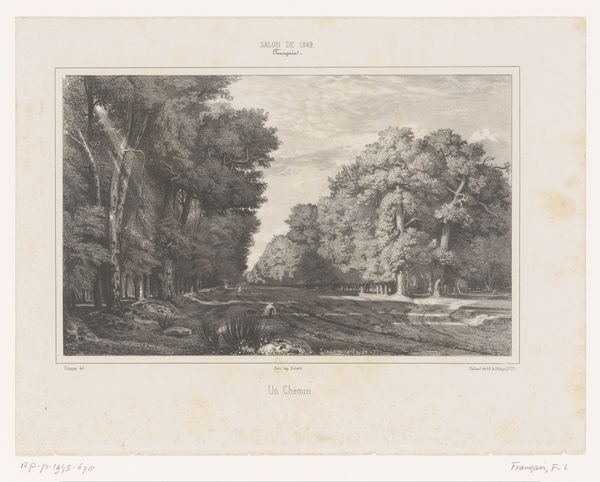
print, engraving
#
16_19th-century
# print
#
landscape
#
romanticism
#
line
#
cityscape
#
engraving
#
realism
Dimensions: height 308 mm, width 485 mm
Copyright: Rijks Museum: Open Domain
Curator: Here we have "View of the Pont de Sèvres", an 1830 engraving by Alphonse Bichebois, currently housed here at the Rijksmuseum. Editor: You know, at first glance, this engraving feels like a wistful sigh. It's all soft light and gentle curves. Very romantic! Curator: It definitely aligns with the Romanticism movement, which favoured emotion and individualism. The detailed line work creates a sense of depth and distance, emphasizing the relationship between nature and this burgeoning cityscape. Notice the almost theatrical arrangement, with the riders staged in the foreground. Editor: It's like we're spying on them through a gap in the trees. There's something both intimate and distant about it. The details are stunning for an engraving, every leaf feels unique, you can almost smell the grass! But you are right, this romantic sentiment it evokes also feels subtly staged for viewing. It's a perfect representation of its time, full of promise and longing all at once. Curator: Absolutely. This wasn't simply about depicting a location; it was about conveying a certain feeling about that location, a very controlled feeling perhaps, given the clear structure of society at that moment, and those depicted in it, which further adds to my feeling it’s staging this scene. Even the inclusion of ordinary figures suggests a wider societal vision being offered here. Editor: And you have that faint suggestion of industrialization in the distance, like a subtle rumble on the horizon. It is interesting it chooses to foreground an idealized vision of what remains. Curator: Precisely! So we can observe here, through art, and imagery, what a society values or fears during periods of enormous change. That even what appear like calm serene countryside pictures can reveal a lot of tensions below the surface. Editor: Well, I will be dreaming of riding horses across the country with a scene just like this in my view now... but maybe with less of a political undertone to it. Thanks for revealing its historical context for us.
Comments
No comments
Be the first to comment and join the conversation on the ultimate creative platform.
